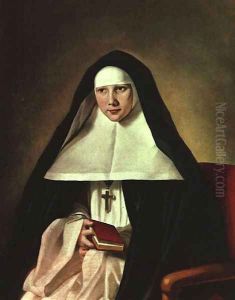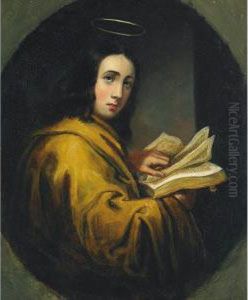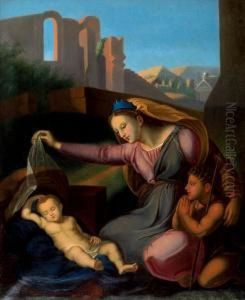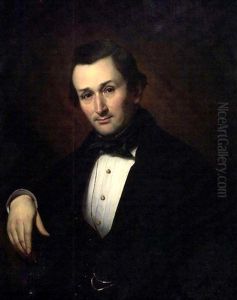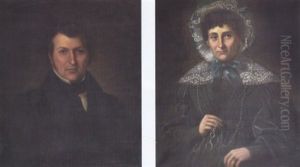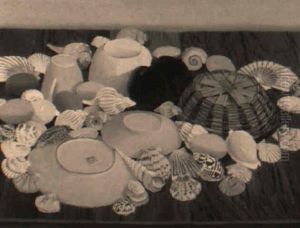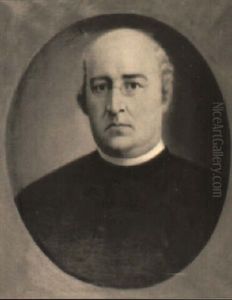Antoine Sebastien Plamondon Paintings
Antoine Sebastien Plamondon was a notable Canadian artist born on December 5, 1804, in L’Ancienne-Lorette, near Quebec City, Quebec. Plamondon's artistic journey began in his native Canada but extended far beyond its borders, reflecting a career that was both prolific and varied. His early education and exposure to art in Quebec laid the foundation for his subsequent travels and studies abroad, which significantly influenced his artistic style and output.
Plamondon spent a significant portion of his early career in Europe, which was a common practice among artists from the North American colonies seeking formal training and exposure to the art movements of the time. He left for Paris in 1826, where he studied under renowned artists such as Jean-Baptiste Paulin Guérin. This period in Europe was crucial for Plamondon, as it exposed him to the Romantic movement, which would later influence much of his work. Upon returning to Quebec in the 1830s, Plamondon established himself as one of the most sought-after portraitists and religious painters in the region.
His oeuvre is characterized by a remarkable versatility, spanning religious themes, landscapes, and portraits. Plamondon's religious works are particularly noted for their emotional depth and use of light, reflective of the European Romantic influence, yet imbued with a distinctively Canadian sensibility. His portraits, on the other hand, offer insightful glimpses into the social and cultural milieu of 19th-century Quebec, capturing the likenesses of its notable figures with precision and sensitivity.
Throughout his career, Plamondon also played a significant role in the development of the arts in Canada, not just through his own works but also by mentoring younger artists and advocating for the establishment of art institutions in Quebec. His contributions to the Canadian art scene were recognized in his time, and he remains a figure of significance in the history of Canadian art.
Antoine Sebastien Plamondon passed away on September 4, 1895, leaving behind a rich legacy that continues to be celebrated in Canadian art history. His works are preserved in various institutions across Canada, including the National Gallery of Canada, providing enduring testament to his skill, creativity, and vision as an artist.
